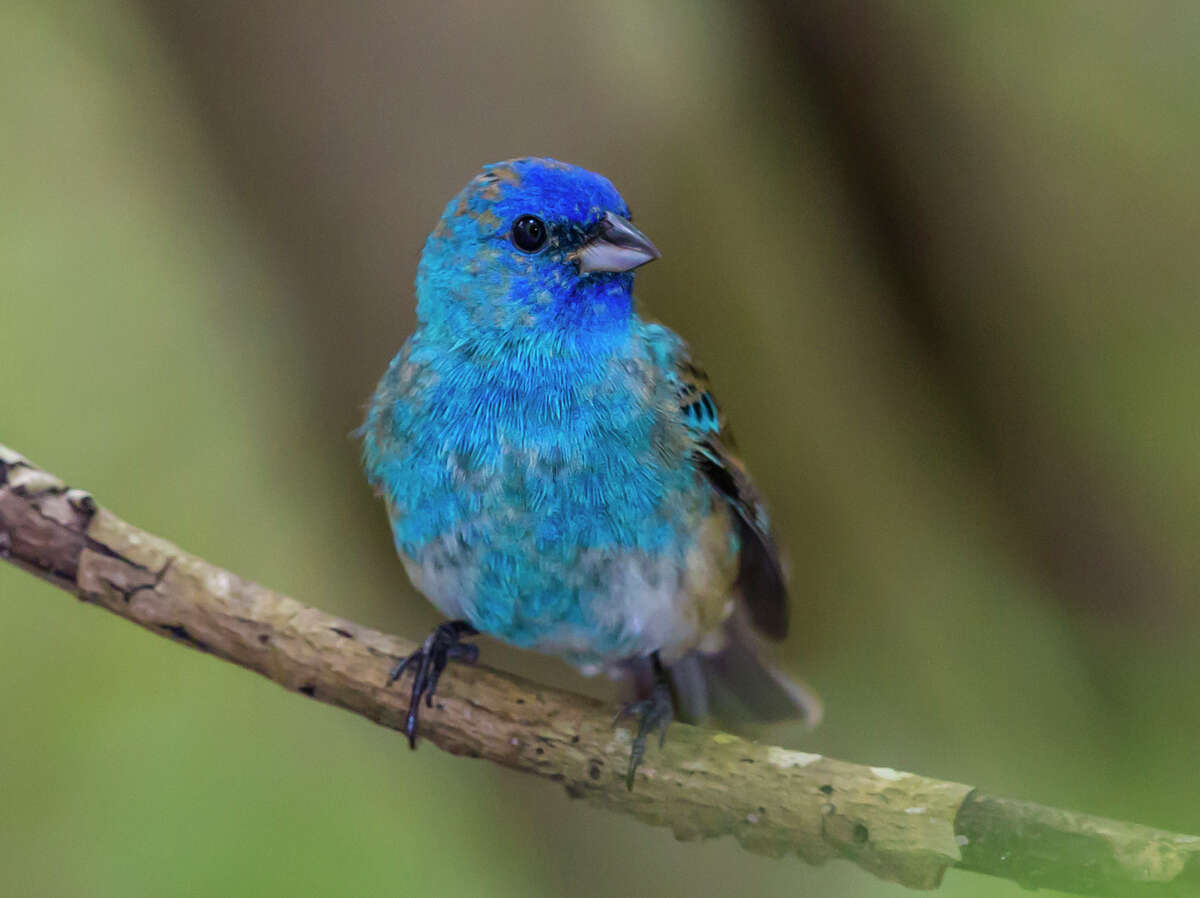Indigo buntings, with their stunningly violet-blue plumage, are arriving in Houston
Gary Clark, Correspondent
April 6, 2023
 1of3Immature indigo buntings can be speckled with blue. They are migrating through the area this spring. Look for them in backyards, area parks, and woodlots. 1of3Immature indigo buntings can be speckled with blue. They are migrating through the area this spring. Look for them in backyards, area parks, and woodlots.
Kathy Adams Clark/Kathy Adams Clark/KAC Productions

A flock of sparrow-sized birds in stunningly violet-blue plumage could soon be blanketing your yard or maybe already have.
The handsome birds are indigo buntings arriving from winter homes in South America, Central America and Southern Mexico. They’re on the way to breeding homes in Texas and much of North America.
Because their migratory route includes a nonstop flight over the Gulf of Mexico, the little buntings will arrive in neighborhoods to rest and eat. They’ll dapple our grassy yards in glorious blue, while fattening up on insects, grass seeds and even birdseeds in backyard birdfeeders.
Dashingly blue males will have a tinge of black on their faces, wings, and tails. We might overlook females because of their nondescript brown plumage, which also characterizes young males who will not display an indigo blue until 2 years old.
Meanwhile, each young male must learn to sing by listening to the songs of both its paternal male, as well as other adult males on breeding grounds. It’s quite a learning curve because males compose new variations of song patterns and share them with each other — much like jazz musicians sharing riffs.
Young males compose different rhythms and phrases to the songs they learn from adults. But no matter the complex song variations from year to year, the melodies follow basic paired phrases consisting of bubbling notes that sound like sweet-sweet...where-where...here-here...see-it-see-it.
Indigo buntings
Indigo buntings breed in eastern half of Texas, parts of the Hill Country and Panhandle.
They also breed throughout the eastern U.S., parts of the western U.S., and in southeastern Canada.
They usually return to the same breeding grounds year after year.
Mature males arrive on breeding grounds first and immediately begin singing to declare breeding territories.
Females arrive next, select male mates, and choose nesting spots.
The female builds a cup-shaped nest about three feet above ground, broods eggs and raises chicks, while the male is scarcely involved.
Surprisingly, adult males are black, rather than blue. Their lustrous blue color is an optical illusion created by feather structure that refracts light waves in the blue spectrum. Depending on the angle of sunlight, males may look various shades of pale or dark blue.
Indigo buntings often breed south of Conroe in Jones State Forest, where tall pine trees stand among an open, weedy, brushy understory. But the birds more commonly breed in East Texas timberlands where woodland clearings have weeds, shrubs and small trees.
Woodland understories enable the birds to seclude their nests in low-level vegetation, such as shrubs and plants growing under a tree canopy. Understories also offer the birds abundant foods such as insects, caterpillars, beetles, and a few blackberries and other fruits. Indigo buntings will also breed along grassy roadsides, open fields, and even rights of way for pipelines and railroads where the birds find dense populations of insects to nourish chicks.
houstonchronicle.com
|





 1of3Immature indigo buntings can be speckled with blue. They are migrating through the area this spring. Look for them in backyards, area parks, and woodlots.
1of3Immature indigo buntings can be speckled with blue. They are migrating through the area this spring. Look for them in backyards, area parks, and woodlots.
